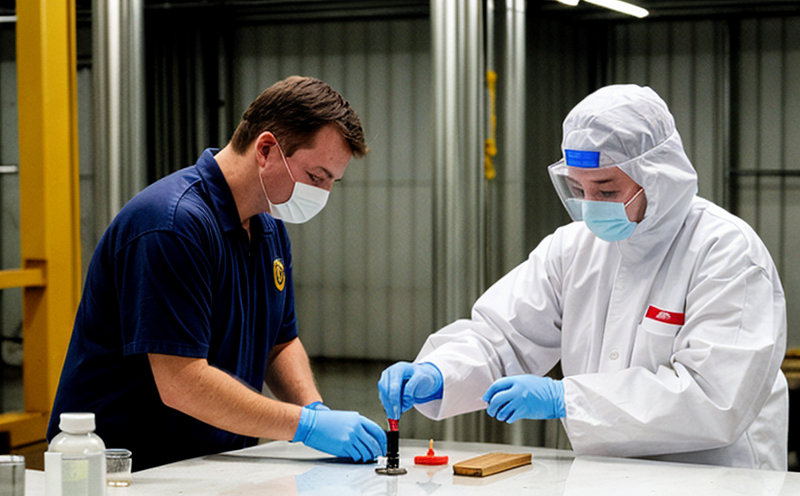ISTA 3J Temperature and Humidity Simulation for Parcels
The ISTA 3J test method is a critical component of ensuring that parcels can withstand the harsh environmental conditions they may encounter during transport. This test simulates real-world temperature and humidity variations, providing valuable insights into the durability of packaging under fluctuating environmental stressors.
Developed by the International Safe Transit Association (ISTA), ISTA 3J is designed to replicate the complex environmental factors that parcels face in transit. These conditions include significant temperature fluctuations over a short period, combined with high humidity levels. The test helps manufacturers and logistics providers evaluate the effectiveness of their packaging solutions before they are exposed to actual transportation hazards.
During an ISTA 3J simulation, packages undergo controlled exposure to varying temperatures and humidities that mimic real-world scenarios such as hot climates followed by cold ones, or prolonged high-humidity conditions. This process helps in identifying potential weaknesses in the design of packaging materials and structures. By subjecting them to these simulated stresses early on, companies can make necessary adjustments before full-scale product release.
The test is particularly beneficial for industries like retail, e-commerce, pharmaceuticals, and electronics where product integrity must be maintained throughout transit. For instance, electronic devices are highly susceptible to damage from moisture ingress or rapid temperature changes, while pharmaceutical products require precise storage conditions to preserve their efficacy. Effective packaging ensures that these items remain safe and functional upon arrival at their destination.
One of the key features of ISTA 3J is its ability to simulate different climatic zones within a single test cycle. This capability allows for comprehensive evaluation of how various environmental factors affect package integrity simultaneously. It's important to note that while ISTA 3J provides valuable information about parcel performance under dynamic conditions, it does not replace static tests which focus on individual aspects such as pressure or impact.
Testing according to ISTA 3J involves placing parcels into a climatic chamber where they are subjected to programmed temperature and humidity cycles. The duration of each cycle is predetermined based on the specific requirements set forth by ISTA, ensuring consistency across different tests conducted around the world. After exposure, inspectors carefully examine the packages for any signs of damage or deterioration.
Understanding the intricacies behind this testing procedure allows stakeholders to better appreciate its significance in enhancing supply chain reliability and customer satisfaction. Effective implementation leads not only to safer products but also reduces costs associated with post-delivery claims and returns due to damaged goods.
Benefits
- Evaluates the resilience of packaging against real-world environmental stresses.
- Identifies potential weaknesses in design early in the development process.
- Ensures compliance with international standards for safe transit.
- Minimizes risk of product damage during shipping, thereby enhancing customer satisfaction.
- Promotes cost savings by reducing post-delivery claims and returns due to damaged goods.
- Improves overall supply chain efficiency through optimized packaging solutions.
Quality and Reliability Assurance
The ISTA 3J test plays a crucial role in maintaining high standards of quality and reliability within the logistics industry. By conducting this simulation, companies can ensure that their packaging meets strict specifications laid out by international organizations such as ISO (International Organization for Standardization), ASTM (American Society for Testing and Materials), EN (European Norms), IEC (International Electrotechnical Commission) among others.
Through rigorous testing under controlled conditions, manufacturers gain confidence that their products will perform reliably across diverse environments. This not only builds trust with customers but also fosters long-term relationships by delivering consistent performance expectations.
In addition to promoting quality assurance, ISTA 3J contributes significantly towards improving reliability within the supply chain. Consistent adherence to this standard ensures uniformity in how packages are handled and transported globally. This consistency translates into more predictable outcomes for all parties involved—from producers to end-users—resulting in enhanced operational efficiency.
For logistics providers, ISTA 3J serves as an essential tool for identifying areas where improvements can be made regarding packaging design and material selection. It allows them to stay ahead of potential challenges faced by packages during transit, ensuring that they remain compliant with current regulations while also anticipating future developments in environmental factors.
Ultimately, the ISTA 3J test method is instrumental in upholding the integrity of goods being transported internationally or domestically. Its application across various sectors highlights its versatility and relevance in today’s rapidly evolving global marketplace.
International Acceptance and Recognition
The ISTA 3J test method enjoys widespread acceptance and recognition worldwide due to its rigorous approach and alignment with international standards. Organizations like the International Organization for Standardization (ISO) have endorsed similar principles, reinforcing the credibility of this testing protocol.
Many countries recognize ISTA 3J as an authoritative source for evaluating packaging performance under challenging environmental conditions. This acceptance extends beyond mere compliance; it reflects a commitment to excellence in product protection and supply chain reliability.
Companies operating globally benefit greatly from adopting this standardized testing procedure because it ensures consistent results regardless of location. Whether you're shipping products within your own country or across international borders, ISTA 3J provides the assurance that your packaging will meet stringent requirements everywhere.
The global acceptance of ISTA 3J also facilitates smoother business operations by eliminating barriers associated with differing national regulations and practices. As more companies embrace this universal standard, they contribute to a harmonized approach towards ensuring package integrity across borders.
Moreover, adhering to international standards like ISTA 3J enhances the reputation of both manufacturers and logistics providers. It demonstrates their dedication to delivering high-quality products and services, which in turn builds brand loyalty among customers who appreciate reliability and safety.
In conclusion, the international acceptance and recognition of ISTA 3J underscore its importance in the global supply chain landscape. By embracing this standardized testing method, companies can ensure that their packaging meets the highest standards worldwide, fostering trust and efficiency throughout the entire logistics process.





